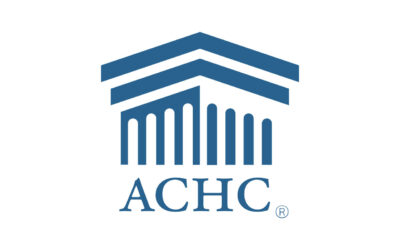
By Richard Parker, MBA, CHFM, CLSS-HC, FASHE, FACHE
In June 2023, ANSI/AMI published a new standard for the selection and maintenance of an effective water quality system for processing medical devices.
The new standard is the culmination of a decade of existing guidance. What has become ANSI/AAMI ST108:2023 started as a Technical Information Report (TIR). AAMI TIR34: 2014/(R)2017 served as initial guidance and was revised in 2021, followed by last year’s release of the new standard (ST108).
The good news: if you’re in compliance with TIR34, you have a solid foundation on which to build. ST108 incorporates many of the same requirements, but goes on to expand requirements for:
• Definitions and testing of water quality types (including steam)
• Water system performance qualification
• Communication/collaboration within a multidisciplinary water management team
• Routine monitoring and continuous improvement.
Review your existing approach
Most organizations have plans and procedures that support the implementation of ANSI/AAMI ST108:2023. Review your existing approach and determine what can be built upon, as opposed to creating an entirely new system.
For example, medical device manufacturers’ instructions for use (IFUs) specify the water quality requirements for gross decontamination, washing, rinsing, high-level disinfection and sterilizing. Hospitals also should have plans in place for minimizing biological agents, such as Legionella, in water distribution systems.
Your existing procedures may already include:
• Roles and responsibilities within the water management team.
• Risk analysis.
• Routine water monitoring.
• Water system maintenance, performance qualification, installation, and operation.
• Criteria for evaluation of water quality.
Where are you located? Some states have already incorporated ANSI/AAMI ST108:2023 requirements into law, so your organization may already be required to meet the standard via local regulations.
Modify, build and expand, as needed
ACHC Standards related to water quality systems are not being changed in 2024. Organizations are expected to follow IFUs for medical devices including the water requirements used for high-level disinfection and sterilization, and to be compliant with local laws and regulations. However, improvements to water processing require extensive planning (and funding) so organizations should begin preparations for complying with ANSI/AAMI ST108:2023 even prior to an accreditation-driven mandate.
Consider the following questions:
- Do your device and equipment IFUs have water quality requirements? Are you following the manufacturers’ IFU?
- Identify the water quality needed for each step of medical device processing.
- Have you defined the water quality types including steam?
- Understand the different water quality types and the associated water quality measurements.
- Utility water: Potable water from a municipality may not meet the criteria of utility water as defined in the standard.
- Critical water: Critical water criteria can be met through additional processing such as reverse osmosis (RO) and/or deionization (DI).
- Steam: Used in autoclaves, the criteria defined in the standard is like critical water – this is commonly called “clean steam.”
- Does your existing water management plan expand the purpose of the water management team?
- The team is multidisciplinary; monitoring occurs at all points of use.
- Roles and responsibilities of the team may need to be redefined.
-
- Membership includes staff responsible for device processing, such as central sterilization, staff performing high-level disinfection of flexible scopes, and clinical engineering staff.
Routine monitoring with meaningful quality metrics
Organizations must demonstrate that the outcomes of the current process are effective at producing properly disinfected and sterilized medical devices. Ongoing monitoring provides evidence of that efficacy. Monitoring may include, but is not limited to checking for:
- Adverse effects to the medical devices.
-
- Corrosion, pitting, scaling
- Biofilm build up
- Increased microbial load or endotoxin content
- Problems with the process.
-
- Decreased effectiveness of cleaning agents
- Degradation of water system or processing equipment (biofouling or scaling)
- Negative patient outcomes.
-
- Infection (e.g., waterborne pathogens)
- Toxicity (e.g., of residual chemicals, exposure)
- Pyrogenic reactions (e.g., fever)
- Impacts to personnel.
-
- Environmental health and safety
ACHC recommends that health care facilities begin evaluation of the ANSI/AAMI ST108:2023 requirements by expanding their water management team to include medical device processing personnel and clinical engineering personnel. The team should perform a gap analysis to include an understanding of existing water treatment systems, equipment, and medical device IFUs. This will provide hospital leadership with direction when it comes to decisions for water treatment systems that may need upgrading, or if new systems need to be purchased.
– Richard Parker, MBA, CHFM, CLSS-HC, FASHE, FACHE, is associate director, physical environment and life safety at Accreditation Commission for Health Care, Inc. (ACHC) where he provides guidance to customers and surveyors in the ASC and hospital programs.








